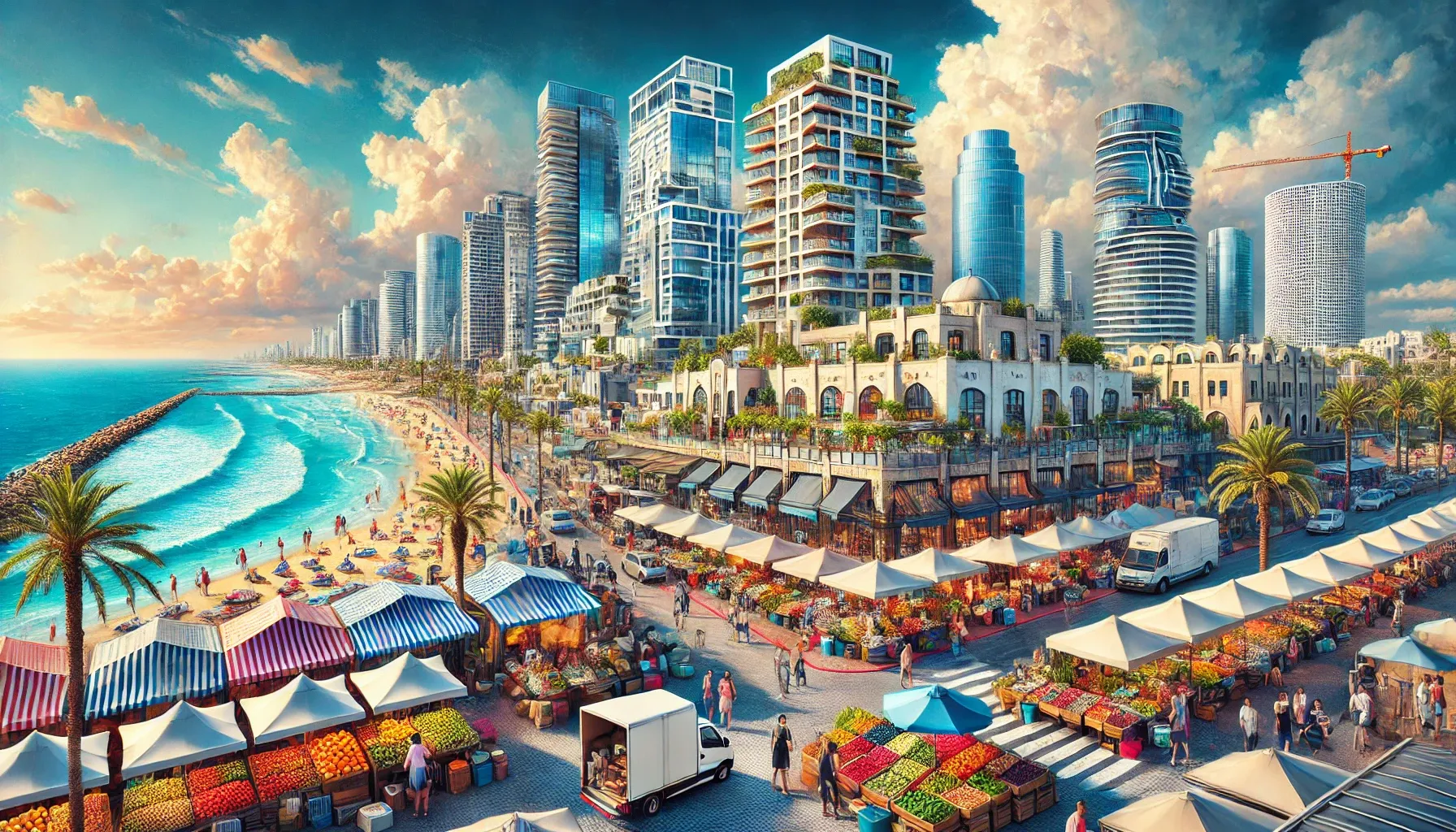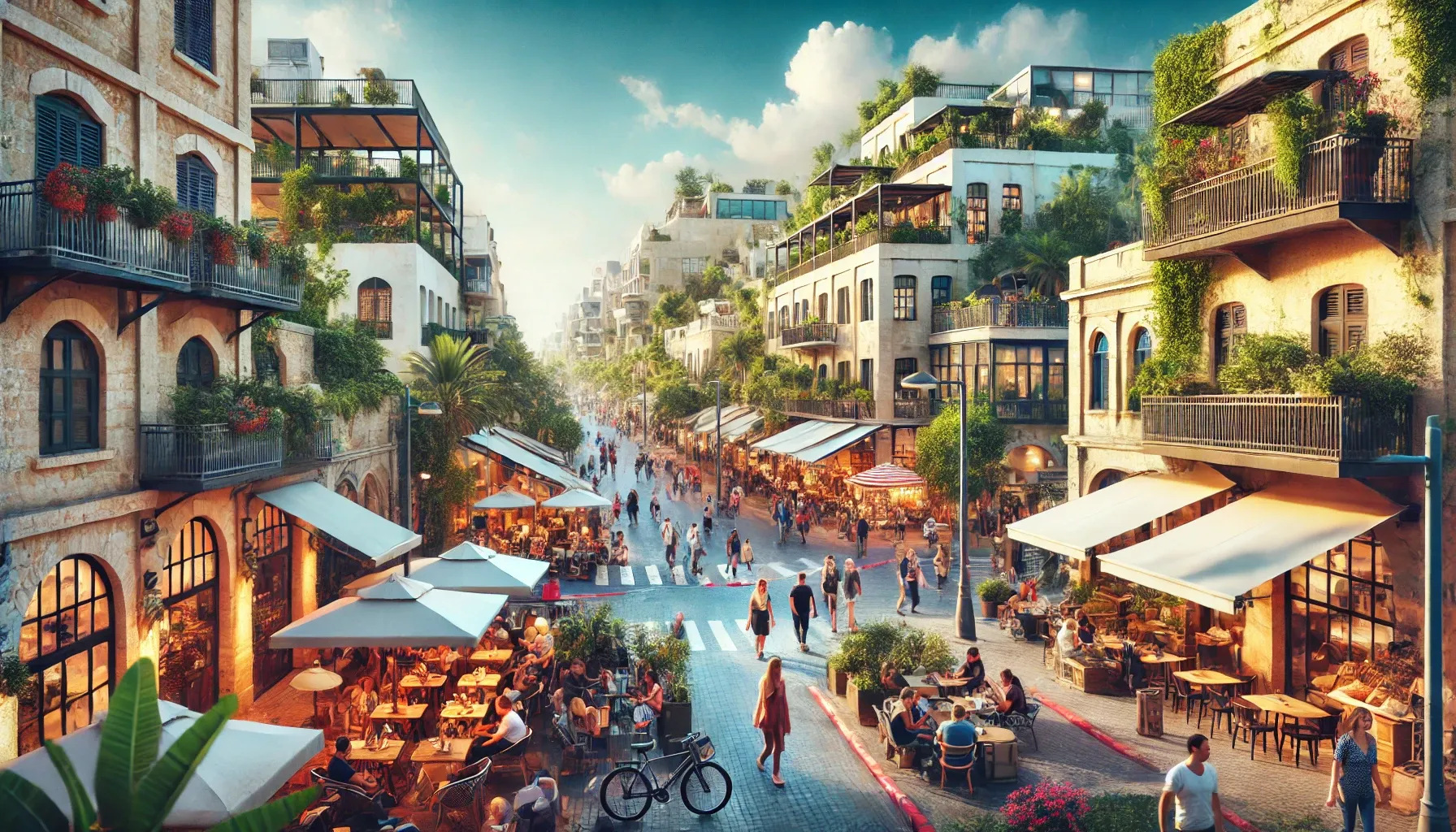Studying the real estate market in Tel Aviv

- Fighting the rise in housing prices in Israel
- The program for the restoration and transformation of the streets of Tel Aviv
- Neve Tzedek: the atmosphere of a mysterious neighborhood in Tel Aviv
Fighting the rise in housing prices in Israel
Since 2008, the Israeli government has been actively combating the rise in housing costs. They have increased taxes on the purchase of additional residential properties, freed up land for construction, and provided discounts on housing for young families without their own homes. Despite this, for a long time, no measures could stop the market's growth. However, at the end of 2016, these efforts began to yield results. Property prices have not increased in the last six months, indicating stagnation. It is difficult to predict further developments. A price increase of 10-15% per year, as seen before, is unlikely to occur under the current government measures aimed at curbing the market.
The history and architecture of Rothschild Boulevard
Rothschild Boulevard in Tel Aviv is one of the city's most famous places. It is one of the first four streets of Tel Aviv that was laid out in the desert sands. The route of the boulevard followed the shape of the ravine that was located there, giving it a curved form. Buildings were constructed along the edges of the ravine. In the early 1930s, plane trees and ficus trees were planted here, becoming an integral part of the city's and the boulevard's character.
The evolution of the area in recent decades
In recent years, Rothschild Boulevard has become one of the most expensive areas in Tel Aviv, having gone through a period of decline in the 60s, 70s, and 80s. The surrounding areas and the boulevard were filled with people of low social status due to the relocation of affluent residents to the northern part of the city. However, it has now become a popular neighborhood, with housing prices increasing by 100% over the last 10 years.
Investing in real estate in Israel
Investing in real estate in Israel can be profitable, but it is important to consider government measures and not rely solely on foreign buyers. Rothschild Boulevard is an attractive investment destination, although the cost of housing in this area is high.

The restoration program of Rothschild Boulevard
In 1995, the Tel Aviv administration launched a restoration program for Rothschild Boulevard, which included a major renovation of historical buildings while preserving their original appearance. As a result, today Rothschild Boulevard is one of the most popular places for relaxation for both locals and tourists, as well as a prestigious residential area.
Most residential buildings on Rothschild Boulevard were constructed in the 1930s and are currently undergoing active restoration and renovation, making them particularly attractive for living. In addition, there are several elite skyscrapers on the Boulevard. Budget housing is not available here; only luxury apartments dominate. The average cost of an apartment on Rothschild Boulevard exceeds 1.5 million dollars. In the most prestigious buildings, the price per square meter starts from 23,000 to 25,000 dollars, which means that an apartment will cost between 2.5 to 5 million dollars. In the case of exclusive offers, their price can reach tens of millions of dollars. For example, in 2011, the most expensive apartment in Israel at that time was sold in the Meyer Tower for 55 million dollars, occupying three floors and having a total area of 2,200 square meters.
Neve Tzedek
Neve Tzedek came 22 years before Tel Aviv was founded and is sometimes called "a city within a city". because of its unique atmosphere. In the 1920s, the neighborhood was home to many writers and other creative intellectuals, which shaped its cultural identity. creative intellectuals, which shaped its cultural identity.
However, like Rothschild Boulevard, Neve Tzedek experienced a period of decline in the 1950s and 60s, when it became a poor area filled with low-income housing for the first waves of Jewish immigrants from Arab countries. By the 1960s, some of these houses were demolished, and in their place, the first skyscraper of Tel Aviv - Migdal Shalom - was built.
The early 1980s marked the revival of Neve Tzedek. Young people connected to the arts began moving to the area, restoring its former character.
29 January
9 October 2024
29 September
9 October 2024




Cafes, restaurants, and shops
In addition to housing and cultural sites, Neve Tzedek is home to numerous cafes, restaurants, high-end clothing boutiques, and jewelry stores.
Accommodation in Neve Tzedek - is to enjoy the special atmosphere created by small and cozy houses surrounded by the big city. This place is unique in its kind and unlike anything else in Tel Aviv. The rehabilitation program has turned Neve Tzedek into a popular and prestigious neighborhood, attracting rich and successful people. The neighborhood also attracts foreign investors with its proximity to the sea, just a 5-minute walk away.
Features of Neve Tzedek
A distinctive feature of Neve Tzedek is the colorful construction of 2-3 story houses with red tiled roofs. Some of the houses are divided into apartments, while others are full-fledged single-family homes. Potential buyers here have the option to choose between an apartment and a house within the same neighborhood. Today, the average cost per square meter of housing in Neve Tzedek is $15,500.
Increase in housing prices
Over the past 10 years, housing prices in Neve Tzedek have increased by 200-250%. Wealthy investors, both local and foreign, are actively purchasing real estate in this area. Among the buyers, you can find well-known businessmen, actors, and artists. For example, in 2015, Roman Abramovich bought a boutique hotel in Neve Tzedek for $25 million.
Kerem HaTeimanim - another famous neighborhood in Tel Aviv.
Kerem a Taymanim has evolved from a neighborhood of poverty to a symbol of wealth. The neighborhood's name translates as "vineyard of the Yemenites" and it predates the establishment of Tel Aviv in the early 20th century.
- The area is located between Allenby Street and the Hasan Bek Mosque.
- The coastline serves as the western boundary of the area, while the Carmel market limits it to the east.
- In the 1950s to 1970s, the area was not very prestigious and was mainly inhabited by the homeless and beggars.
- Over time, Kerem and Taymanim began to change.
- The neighborhood underwent significant changes in the 1980s, 1990s, and 2000s.
Conclusion
With each passing year, Tel Aviv is becoming an increasingly picturesque and promising real estate destination. Its growing economic potential, cultural heritage, and attractive views make it very appealing to investors. However, it is important to keep in mind the factors that can influence market trends and to make informed decisions when selecting properties for investment. The waterfront areas, the city center, and northern Tel Aviv continue to be the most interesting in terms of investment opportunities.
Foreigners in the market
Foreigners are also actively participating in the real estate market, but their influence is limited and not decisive. The purchase of housing for both investment and personal use is of interest to buyers from all over the world. The current stability of prices indicates a certain level of market maturity; however, future changes are difficult to predict. This requires further analysis and a professional approach when making strategic investment decisions.
Investment directions
Rothschild Boulevard: Prices have increased by 100% over the last 10 years. Perhaps the most famous place in Tel Aviv with a complicated history. The boulevard is one of the first four streets in Tel Aviv that were laid out in the dunes, on sand. The route of the boulevard followed the direction of the ravine that was located there. At the time of construction, there were no technical means to straighten it, so the boulevard ended up having a curved shape.
They filled the center of the ravine with sand, which created its silhouette. Houses were built along the edges of the ravine. In the early 1930s, they planted plane trees and ficuses here, which have since become an integral part of the image of Tel Aviv and the boulevard, which has become the greenest part of the city.
- The Boulevard and surrounding neighborhoods went through a period of decline in the 60s, 70s, and 80s. The city was growing northward, and and the new neighborhoods were considered more upscale. Wealthy residents left Rothschild and moved north, and the boulevard and surrounding neighborhoods were settled by people of lower socioeconomic status.
The opportunities that have arisen today have allowed Rothschild Boulevard to become one of the most expensive areas not only in Tel Aviv but also in the world.
Comment
Popular Posts
9 October 2024
1485
29 September
384
9 October 2024
9940
Popular Offers

Subscribe to the newsletter from Hatamatata.com!
Subscribe to the newsletter from Hatamatata.com!
I agree to the processing of personal data and confidentiality rules of Hatamatata










